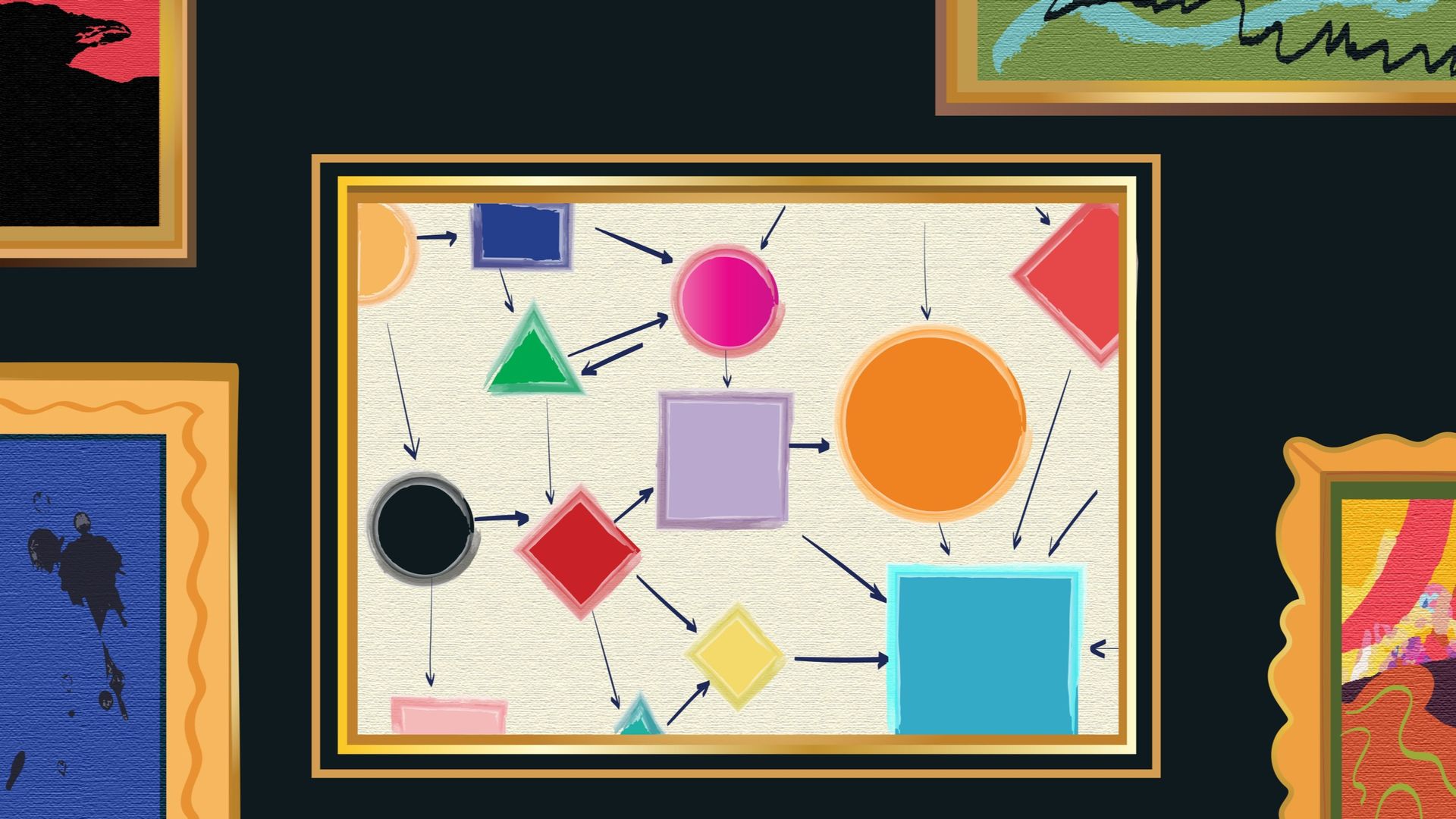尊敬的用户您好,这是来自FT中文网的温馨提示:如您对更多FT中文网的内容感兴趣,请在苹果应用商店或谷歌应用市场搜索“FT中文网”,下载FT中文网的官方应用。

Two decades ago, Artuto Cifuentes, a Chilean financier, used his quantitative skills to parse financial derivatives with great effect: long before 2008, he warned that a financial crisis loomed (influencing my own journalism).
二十年前,智利金融家阿图罗•西富恩特斯(Artuto Cifuentes)利用他的定量技能成功解析金融衍生品:早在2008年之前,他就警告说金融危机即将来临(对我的新闻工作产生了影响)。
Now, however, Cifuentes has another mission: he is redeploying his skills to analyse art, exploring issues such as the relative return and risk profile of Jean-Michel Basquiat’s paintings. (Complex calculations in his co-authored book The Worth of Art suggest that Basquiat not only outperforms US equities, but also works by Renoir and Matisse.)
然而,西富恩特斯现在有了另一个任务:他正在重新运用他的技能来分析艺术,探索让-米歇尔•巴斯奎特(Jean-Michel Basquiat)的画作的相对回报和风险特征。(他与人合著的《艺术的价值》一书中的复杂计算表明,巴斯奎特的表现不仅优于美国股票,还优于雷诺阿和马蒂斯的作品)。
Is this a good thing? It is an intriguing issue to ponder as Art Basel Miami Beach gets under way, amid parties, celebrity gossip and frenzied debates about artistic trends.
这是一件好事吗?当迈阿密海滩(Miami Beach)巴塞尔艺术展(Art Basel)开始时,人们会思考这个引人入胜的问题,伴随着派对、名人八卦和对艺术趋势的疯狂辩论。
Previously, artists and collectors have preferred to think of this world in terms of creativity, not finance. After all, art prices are driven by slippery cultural mores, not utility value — or, as the American sociologist Thorstein Veblen cynically observed, signals around social status. Those would seem to defy any spreadsheet.
以前,艺术家和收藏家更愿意从创意而非金融的角度来思考这个世界。毕竟,艺术品的价格是由变幻莫测的文化风俗而不是实用价值所驱动的,或者正如美国社会学家索尔斯坦•维布伦(Thorstein Veblen)愤愤不平地观察到的那样,是关于社会地位的信号。这些似乎无法用任何电子表格来解释。
However, Cifuentes is not alone in looking at creativity through a quantitative lens. A growing number of art collectors are also focused on an investment frame as well. This might horrify artists. But such financialisation could deliver one big benefit: more transparency. And this is badly needed, given that the art world has been as opaque — and scandal-prone — as derivatives in decades past.
然而,西富恩特斯并不是唯一以定量视角看待创造力的人。越来越多的艺术收藏家也关注投资框架。这可能会让艺术家感到恐慌。但是这种金融化可能会带来一个巨大的好处:更多的透明度。考虑到艺术界过去几十年来一直像衍生品一样不透明且容易引发丑闻,这是非常需要的。
This point is underscored by recent surveys. Take a biennial one that has been done since 2011 by the consultants Deloitte Private and ArtTactic into art “stakeholders”, such as wealth managers, family offices and brokers.
最近的调查进一步证实了这一点。以德勤私人(Deloitte Private)和ArtTactic为顾问的一项两年一次的调查自2011年以来一直在进行,调查的对象是艺术“利益相关者”,如财富管理人员、家族办公室和经纪人。
The 2023 report notes that there has been “a significant shift” in attitudes to art during the past decade. Back in 2014, only 53 per cent of wealth managers considered art expertise part of their industry. However, in 2016 this leapt to 78 per cent and now stands at 90 per cent.
2023年的报告指出,在过去十年中,对艺术的态度发生了“重大转变”。在2014年,只有53%的财富管理人员认为艺术专业知识是他们行业的一部分。然而,在2016年,这一比例跃升至78%,现在已经达到了90%。
Three-quarters of wealth managers now offer art services, compared with a quarter in 2011, while 41 per cent of collectors now cite financial value as “their primary motivation” for buying art, the highest level since the survey began.
现在有四分之三的财富管理人员提供艺术服务,而2011年只有四分之一,同时有41%的收藏家现在将财务价值作为购买艺术品的主要动机,这是自调查开始以来的最高水平。
A separate annual study from UBS and Art Basel, run for a decade, echoes this theme, albeit with some difference in the details. This year it polled almost 3,000 high net worth individuals, who control some $2tn of wealth that could be used for art. Financial motives were cited as the second-biggest reason for buying art, topped only by “personal pleasure and identity” (except in Brazil and Japan, where they actually dominated).
瑞银(UBS)和巴塞尔艺术展的一项独立年度研究已经进行了十年,尽管在细节上存在一些差异,但它也呼应了这一主题。今年,该研究对近3000名高净值个人进行了调查,他们掌控着约2万亿美元的财富,可以用于购买艺术品。除了巴西和日本(在这两个国家,金融动机实际上占主导地位),购买艺术品的第二大原因是“个人乐趣和身份认同”。
This report also noted rising “research-based” purchases, or those that happen after number-crunching rather than on impulse. And there has been an “explosion” in the use of credit, it adds: about half of collectors report buying art with loans and art is increasingly being used as collateral for borrowing. In other words, financialisation is happening on several fronts.
该报告还指出,基于研究的购买正在增加,即那些经过数据分析而非冲动购买的购买。此外,信贷的使用也出现了“爆炸性”增长:大约一半的收藏家表示他们用贷款购买艺术品,而艺术品越来越多地被用作借贷的抵押品。换句话说,金融化正在多个方面发生。
Why? One probable reason is that wealthy individuals want portfolio diversification at a time when the outlook for mainstream assets is becoming unpredictable, due to gyrating interest rates and geopolitical risk.
为什么?一个可能的原因是,由于利率波动和地缘政治风险,主流资产的前景变得难以预测,在这种情况下,富人希望分散投资组合。
This may not always be as effective a tactic as people hope. At present, collectors — or investors — seem optimistic about the market and slightly more bullish than they are about stocks: 77 per cent expect art prices to rise next year, the UBS report says.
这可能并不总是人们所希望的一种有效策略。目前,收藏家或投资者对市场持乐观态度,对艺术品的看涨程度稍高于对股票的看涨程度:根据瑞银报告,77%的人预计明年艺术品价格将上涨。
But the rising use of credit could make art prices track the interest rate cycle more closely in the future. And past price performance has been very mixed. The Knight Frank luxury index, for instance, suggests that art prices jumped 30 per cent last year, beating most other assets. However, the UBS report shows that some sectors, such as non-fungible tokens, have collapsed in value recently.
但信贷使用的增加可能会使艺术品价格在未来更紧密地追随利率周期。过去的价格表现非常复杂。例如,莱坊奢侈品指数(Knight Frank luxury index)显示,去年艺术品价格上涨30%,涨幅超过多数其它资产。然而,瑞银的报告显示,一些领域,如非同质化代币,最近价值暴跌。
Meanwhile, the Deloitte report points out that the Artnet fine art index only delivered a 2.5 per cent compound annual growth rate between 2008 and 2023. That is lower than for the S&P 500, real estate and gold (8.5 per cent, 3.8 per cent and 4.9 per cent respectively).
与此同时,德勤报告指出,Artnet艺术品指数在2008年至2023年间只实现了2.5%的复合年增长率。这低于标普500指数、房地产和黄金的增长率(分别为8.5%、3.8%和4.9%)。
The second issue that is driving this financialisation is transparency. As the Deloitte report notes, more than 80 per cent of wealth managers believe there will be more visibility around deals, fees and sourcing in the future, due to the fast-expanding use of digital technology.
推动金融化的第二个问题是透明度。正如德勤报告所指出的,超过80%的财富管理者认为,由于数字技术的快速发展,未来交易、费用和溯源将更加透明。
Online art auctions, which proliferated during the pandemic, are one example of this. Others are digital registries of sales and prices and the use of blockchain technologies to establish provenance.
在疫情期间激增的在线艺术品拍卖就是一个例子。其他例子还包括销售和价格的数字登记,以及使用区块链技术确定来源。
So far the results have been patchy — some corners of the market are still highly opaque. But the more credible and transparent it becomes, the more likely it is to attract new investors, who will in turn expect further transparency, in a self-reinforcing cycle.
迄今为止,这方面的成果并不显著--市场的某些角落仍然非常不透明。但市场变得越可信、越透明,就越有可能吸引新的投资者,而这些投资者又会期待进一步的透明度,从而形成一个自我强化的循环。
Don’t expect this to spark much discussion in the Miami galleries this week. At art fairs, financialisation remains a dirty word. But if this trend drives more money into the art world, those artists should have reason to raise a glass to it. As Cifuentes says, even algorithms can create beauty.
不要指望这在迈阿密画廊中引起太多讨论。在艺术博览会上,金融化仍然是一个不受欢迎的词。但是,如果这种趋势将更多的资金投入艺术世界,那些艺术家应该有理由为此举杯庆祝。正如西富恩特斯所说,即使是算法也能创造美。